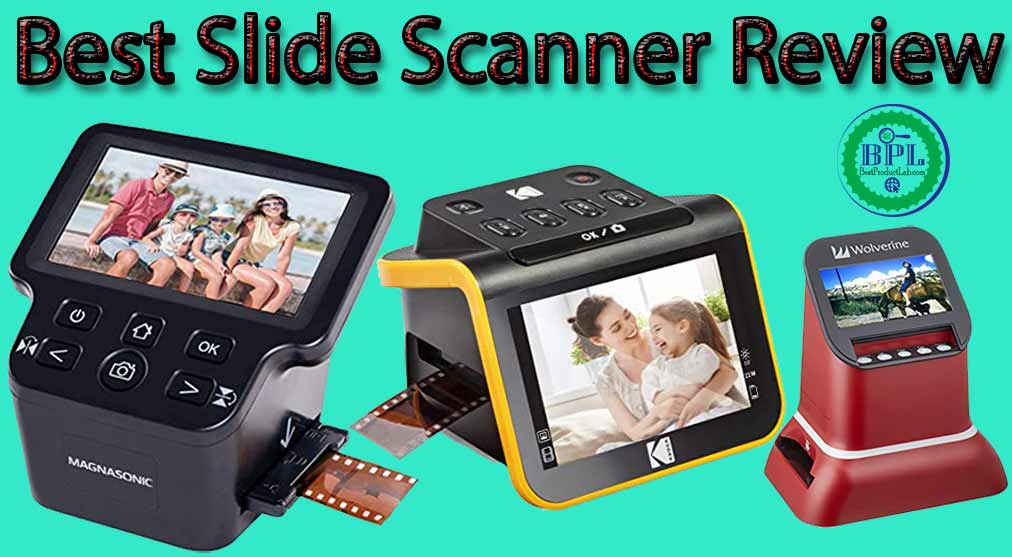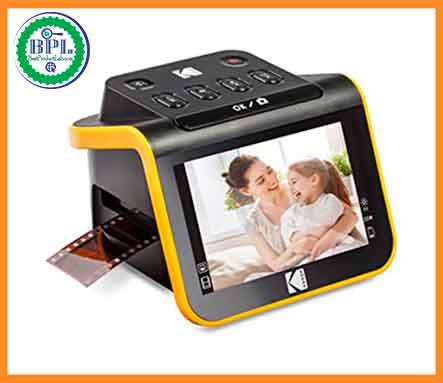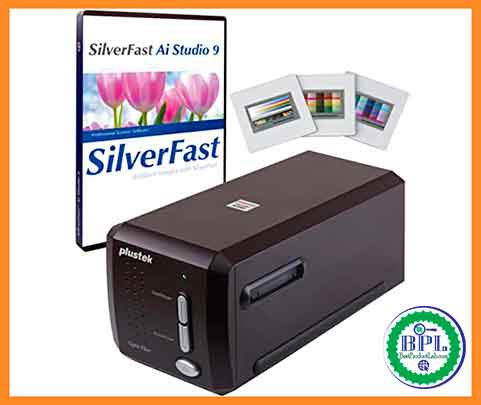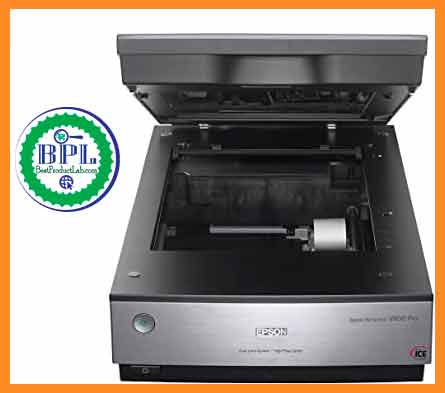
Contents
Last Updated on December 7, 2024 by admin
One of the most important is its quality. The more expensive models can be unnecessarily expensive. This means that a good scanner should have good quality for the money. Moreover, a cheap model can be worthless. You might be better off spending a few more dollars and getting a better one. Luckily, there are a few options out there that are both affordable and effective.
If you want a good slide scanner, then you should check whether it has an LCD screen for viewing photos and editing them. A 3.5-inch color LCD screen will allow you to see the pictures and make necessary changes before saving them. It also has settings for brightness, mirror, and flip. While capturing a picture with a slide scanner is important, many users complain about the quality of the pictures. In other words, it is useless if you can’t adjust the colors on your own. Luckily, there are models that come with factory presets that will automatically adjust the color.
1. KODAK
The KODAK slide scanner helps you capture images of your film negatives. It is easy to use, with a 3.5′ LCD screen. You can view the slideshows, edit your photos, and even transfer the images to a computer. It has a USB port and HDMI-mini port, which allow you to connect it to a television. This device is very user-friendly and feels like a slide projector.
The Kodak slide scanner has an easy-to-use interface. After you’ve installed the software, you can then insert your film. Press the capture button, and the process will start automatically. Each negative and slide will take just a few seconds to scan. The Kodak slide scanner is one of the most affordable options on the market.
2. Plustek
The Plustek QuickScan is a button utility. It scans 35mm negative and positive slides. It is easy to use but still offers detailed scans. It supports PCX, JPG, and BMP. It even includes Negafix software, which helps you fix the imperfections in your photos. A Plustek QuickScan is an excellent option for capturing memories, whether you’re an amateur or a professional.
A Plustek slide scanner features high-resolution images, a resolution of up to 7200 dpi. Its 3.6-stop dynamic range allows for more detail to be captured in the shadows and highlights. It also features a Multi-Exposure function that allows users to capture images with different exposure settings. The software can also automatically adjust contrast and saturation to create the optimal image quality for each scan. The Plustek OpticFilm 8200i SE is an excellent choice for people looking to digitize their old photos.
3. Pacific Image Electronics
This is a great slide scanner for photographers. It captures the detail and colors of each picture, and you can transfer them to a PC for editing and viewing. Unlike other models, this model is small and portable and can be used for both home and professional purposes. The CyberView X has a Variations dialog box where you can try out different color and brightness options. It also has an eye-level resizing tool. However, this model lacks the Digital ICE dust removal and related features, which is the main reason this unit is not an excellent choice for a photo lab.
PowerFilm is a great option for anyone looking for a high-quality, affordable film scanner. It has a batch scanning function that allows it to scan a large number of 35mm filmstrips quickly and easily. The PowerFilm offers a 24MP resolution and 24 fps scanning speed. It can also produce 300-dpi prints. The PowerFilm is also an excellent option for anyone wanting to scan large amounts of film.
4. Wolverine
When looking for a film and slide scanner, you may want to consider the Wolverine F2D Titan. This device is dedicated to converting films and slides to digital files and is easy to use. However, it is not the best option for everyone. If you have more than a few negatives or slides to scan, this model might be too complex. Fortunately, it’s relatively affordable and has many positive features.
The Wolverine F2D Titan is a popular choice for a slide scanner. This device allows you to scan both 35mm and 100mm slides. It also supports 127K slides and negatives. It can even be used to scan 8mm / Super 8 film strips. This unit can be connected to a computer through a USB Flash drive, making it easy to transfer your photos from one format to another.
5. Magnasonic
If you want to scan old photographs, the Magnasonic All-In-One 23MP Film Scanner is a must-have. This camera will scan film and create digital images in seconds. The scanning process is painless, and you’ll love the high quality of your images. And because it’s so easy to use, it can help you take care of other tasks at the same time. Moreover, you can scan as many slides as you want.
The FS70 is a digital slide scanner that converts 35mm, 126KPK, and 110 films to digital photos. The camera features a 2.4-inch LCD screen and 128MB of memory. It also has a USB 2.0 port and an SD card slot. It has a built-in memory of up to 100 images. You can store as many slides as you like on the included microSD card.
6. DIGITNOW
The DIGITNOW slide scanner is a versatile digital image scanning device with a number of unique features. It can scan 35mm, 110, 126, and Super 8 films and create jpeg files. It also has a built-in infrared channel for detecting dust and scratches on slides and negatives. The machine features a 2.4-inch color LCD screen for viewing and saving scanned images.
This digital imaging device has high-resolution imaging and a high-quality optic element. It converts slides and negatives in 2 seconds, which is an excellent time-saving feature, which means that it can store up to 100 images without a micro SD card. It’s a versatile and portable device, making it an ideal choice for scanning old slides.
7. Eyesen
The Eyesen slide scanner converts 35mm, 126mm, and 110mm negatives into high-quality digital images. It is designed with a flatbed design and can handle a variety of film sizes, up to 4″x5″. It comes with HDMI, USB, and video out connections. It also comes with plastic film holders. Unfortunately, the materials feel flimsy, and the touchscreen interface feels very unresponsive.
This product is USB-powered and has a 22MP sensor with excellent color fidelity. The 2.4″ LCD screen lets you preview images before transferring them to your computer. It is also compatible with both 8mm film reels and 3″ slides. However, it is not suitable for thick negatives. Regardless of your needs, you can rest assured that this scanner will make your slides and film collection look amazing!
8. ClearClick
The ClearClick Virtuoso 2.0 (Second Generation) Slide & Negative Scanner is an ideal solution for converting old photographs to digital format. The Virtuoso 2.0 scans film to digital photos at a high resolution of 22 megapixels. It also does not require drivers or software. The Virtuoso is an excellent choice for people who want to convert old photos from a variety of formats.
The QuickConvert 2.0 can digitize photos, slides, and negatives at a high resolution of up to 14 megapixels. The scanner also offers a free version of PhotoPad Pro software that allows you to edit the image before storing it. The Verdict: This is an excellent scanner for scanning photos and slides. Its price is competitive, and it’s fast and easy to use. It’s a great option for a small office.
9. Epson
The Professional model in the Epson slide scanners is the best choice for professionals. This special model has many features to improve the quality of your image. Its features include auto exposure and tone correction. You can also use the color palette. Then, use the software to select the appropriate settings for your image. Once you’re happy with the results, you can download the software and print your images. If you’re a student, consider purchasing an Epson Slide Scanner for your school.
The V850 and V700 are two of the most popular slide scanners, thanks to their advanced optics. The V850 features a high-reflection mirror and anti-reflective optical coatings. These features minimize optical distortion. The best film scanners can upload, scan, and convert old film rolls into digital files. These scanners can save the photographs you’ve made and organize them into a digital format.
10. Minolta
The Scan Elite 5400 II is a great all-in-one scanner for photographers. Its increased scanning speed is a great feature, but its cheap and unsteady housing means that your slides may tilt while you’re scanning them. This review is from a Minolta slide scanner user who translated the original into English. It is worth a read, but there are better options available.
The slide holder is a metal spring that holds four slides. You can choose to scan a single slide or a series. The Minolta software has a batch scanning feature, which allows you to make batches of scans at once. You can also choose to batch scan your negatives and create thumbnails for each image. The scanner automatically positions the film holder according to the image, which makes it easier to scan multiple slides at once.
FAQ’s & Buying Guide
Depending on your needs, this may be a difficult task. A good model will allow you to convert many types of film, including 35mm, 110, and super 8 films. You can even share the images with family and friends through social media networks. If you don’t want to spend a lot of money on software, a high-quality scanner will be enough for you.
The best slide scanner should have several features. The most basic option is to scan a single slide or a group of slides at a time. Most of these models will have enough memory to scan a large number of slides. But if you plan on storing more than one file at a time, you should choose a device with more storage space. It is important to keep this in mind when buying a new scanner.
What is the Best Way to Scan Old Slides?
If you’ve been collecting old slides for years, you might be wondering what the best way to scan them is. The best way to make them more accessible is by converting them into digital images. You’ll be able to share and view them in a more convenient format than ever before. Here’s how to go about it. This tech expert shares his tips and tricks for scanning old slides.
First of all, you’ll need an iPhone or Android. A slide scanner app can be downloaded to your phone. You’ll need a light source and a steady hand to capture the image. You can also make a web page dedicated to the projector and capture the projected image. The app has a battery-powered backlight and supports most phones. You’ll be able to crop and edit images with ease.
Is There a Scanner For Slides?
Most of these models come with a Quick Slide Viewer that lets you preview your slides before you scan them. This is a great feature for people who want to digitize collections of slides. If you’re looking for the fastest option, then a model with a large storage capacity is best.
There are many reasons to scan your slides. First, you’ll want to scan as many slides as possible. You’ll want a high resolution so you can enlarge the photos as much as possible. The higher the DPI, the larger the images will be. And since standard 35mm films are small and thin, they require a lot of work to scan. An optimal DPI for a 35mm film is 3000. Second, you’ll need to decide what type of film you’ll be using. The most common types of slides are 120 and the 35mm format.
0 Comments
Leave a reply
You must be logged in to post a comment.











